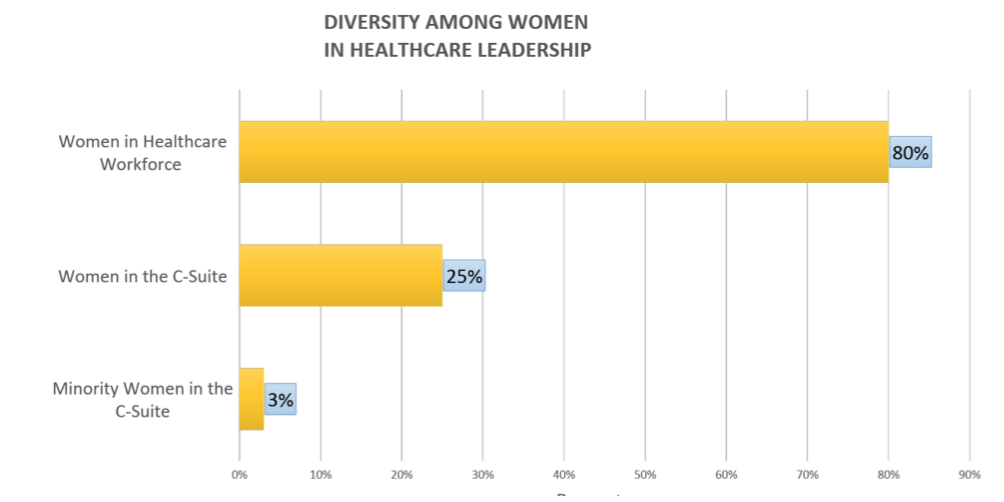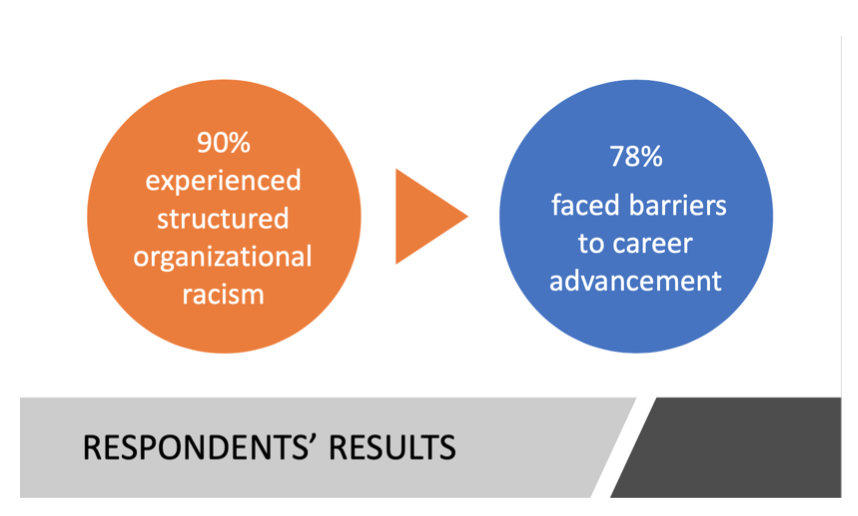Despite decades of attention, there has been very little progress toward increasing diversity in healthcare leadership. Data published by the American College of Healthcare Executives confirms that minorities are underrepresented in executive leadership, and are paid less when compared to their white counterparts. According to the American Hospital Association, 31% of patients nationally are minorities, 11% of hospital executives are diverse, and only 3% of the C-Suite roles are filled with minority women.
When we search the literature for minorities in nursing leadership, we see that the topic is rarely mentioned. In fact, there is a need for a body of literature and empirical evidence that describes the intersection of minority leadership, health outcomes, and career development.

Fostering Diversity in Healthcare
As a strategy to address healthcare disparities in diverse populations, Yvonne Wesley, PhD, RN, FAAN, was involved in creating the Leadership Institute for Black Nurses in 2006 to intentionally promote career advancement and leadership among nurses of African descent. After the 100th Fellow completed the training in 2012, the Fellows began reuniting periodically to assess their progress.
In 2017, Wesley and M. Jane Fitzsimmons, MSN, RN, began working together to collect the voices of minority nursing leaders and their experience breaking the glass ceiling to the C-Suite.
In an effort to better understand what opportunities and barriers black nursing leaders faced, Fitzsimmons decided to conduct a survey to gather information from successful black nursing leaders. With assistance from Dr. Angelleen Peters Lewis, Fitzsimmons designed a survey that asked these leaders about racism and the barriers they experienced in their career progressions.
When asked, “What do you perceive as the top three barriers for diversity nurse leaders in advancing their careers to the executive level?” Access, sponsorship, and opportunities for leadership experiences were among the top three areas identified.


7 Key Elements for Promoting Diversity in Healthcare Leadership
1. Create a safe space.
Build a nurturing environment where everyone can ask questions, clarify terms, and test perceptions on diversity. Organizations should approach diversity as a cultural change process and define diversity as an organization-wide priority.
2. Be cognizant of your own implicit bias and teach others about implicit bias.
Provide the necessary tools and resources to understand and address implicit bias in the workplace.
3. Re-examine internal policies, procedures, and practices.
Take a fresh look at current approaches —with special attention to recruitment and career advancement processes.
4. Require a diverse pool of candidates from search firms.
Ask how the search firm plans to reach a diverse pool and define measurable criteria for the position that relates to success in the job.
- Use those objective criteria to drive all aspects of the search process
- Perform a blind review of resumes in the initial screening
- Educate all interviewers on expectations for participation in the interview process
- Specify and communicate the criteria, values, and leadership style being sought
- Develop candidate interview questions specific to the criteria
- Employ an objective candidate evaluation tool based on the criteria
Search consultants should prepare search committee members based on best practice and guide the internal process. In addition, the search firm should compile, distribute, and review all interviewer feedback on candidates. Of course, the first step is to require all candidate evaluations be completed.
5. Move from mentorship to sponsorship.
Everyone knows that a mentor gives general career or role guidance, but sponsorship describes a more formalized and intentional relationship that is focused on the advancement of the protégé. Sponsors open doors and provide access for the protégé.
6.Offer developmental opportunities to a more diverse pool.
Leaders should develop an intentional process that goes beyond their inner circles to offer leadership development opportunities, such as committee appointments and special projects, to a broader, more diverse group. Minority nurses often miss out on opportunities to develop the fundamental building blocks that help to advance into leadership positions and receive recognition for their work beyond their current role.
7. Leverage the Influence of Professional Associations.
Team up to tackle this critical issue of diversity in healthcare by working with professional associations. Coalitions have a broader reach than any single organization can accomplish alone.
-
- Get involved
Sponsor networking events at minority professional associations or sponsor diverse attendees to attend local leadership events. - Connect 1:1
Healthcare conferences offer a valuable opportunity to make personal connections with diverse leaders. View a comprehensive list of minority nursing associations in the United States. - Collaborate across professional associations
Establish coalitions across professional associations that aim to raise awareness, collect information and develop pathways to inclusivity.
- Get involved
Where Do We Go From Here?

As an informed executive, assess the environment within your current organization. Does it promote a fair and equitable process? Do you engage 1:1 with diverse nursing leaders? Promoting growth, advancement, and inclusion are the first steps towards achieving increased diversity in healthcare leadership. Given the challenges of implicit bias, be intentional in creating inclusive environments and be extra vigilant when developing recruitment, leadership development, and career advancement processes.
Interested in receiving more information from the Survey of Diverse Nurse Leaders?
[Request Survey Information]
Kirby Bates Associates drives healthcare organizations to achieve high quality, cost-effective patient care through our comprehensive portfolio of proven leadership services, including Executive Search, Interim Leadership, and Executive Advisory Services. As successful healthcare executives, our effective and inclusive approaches deliver sustainable solutions for our clients’ greatest leadership challenges.

